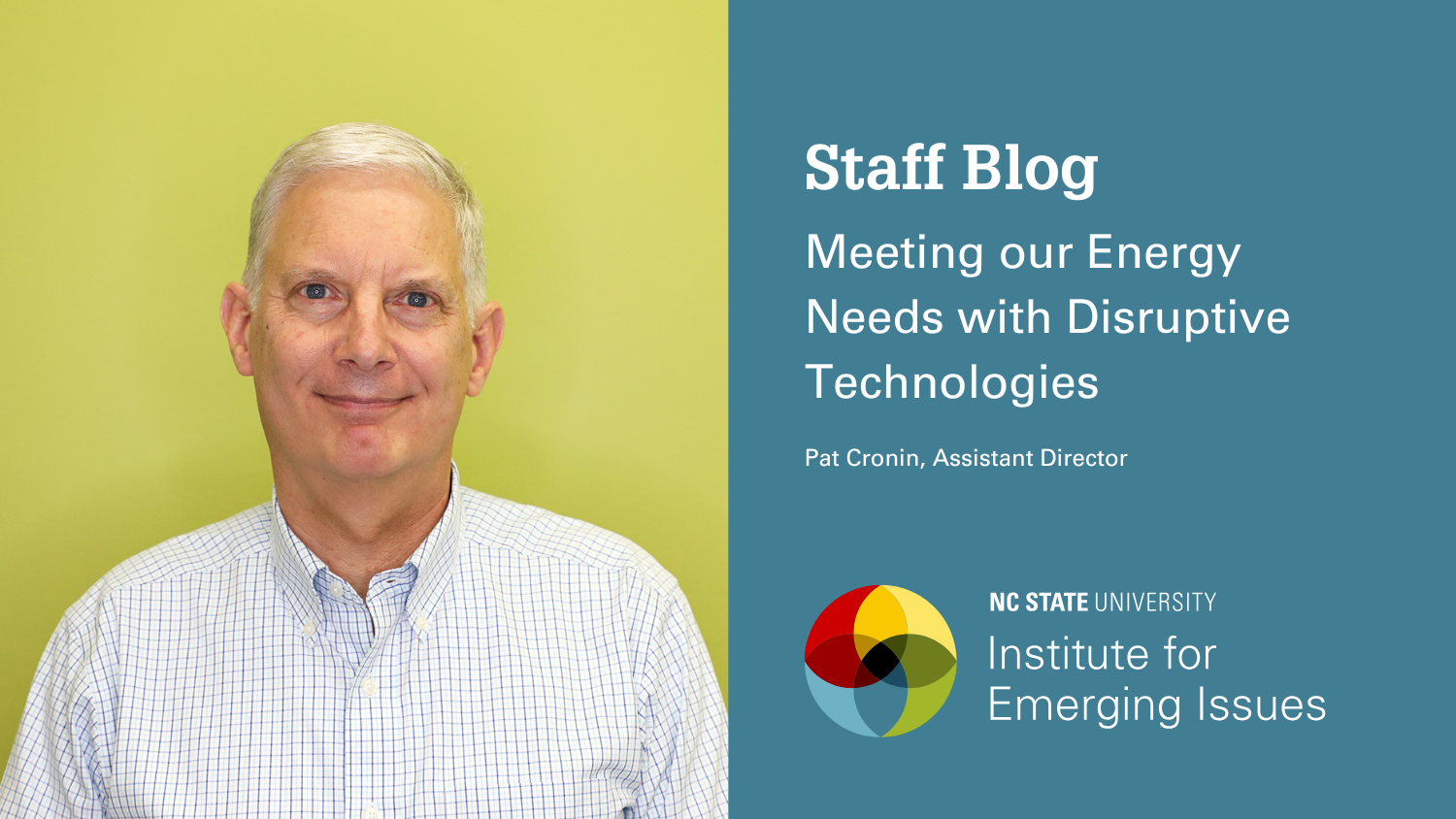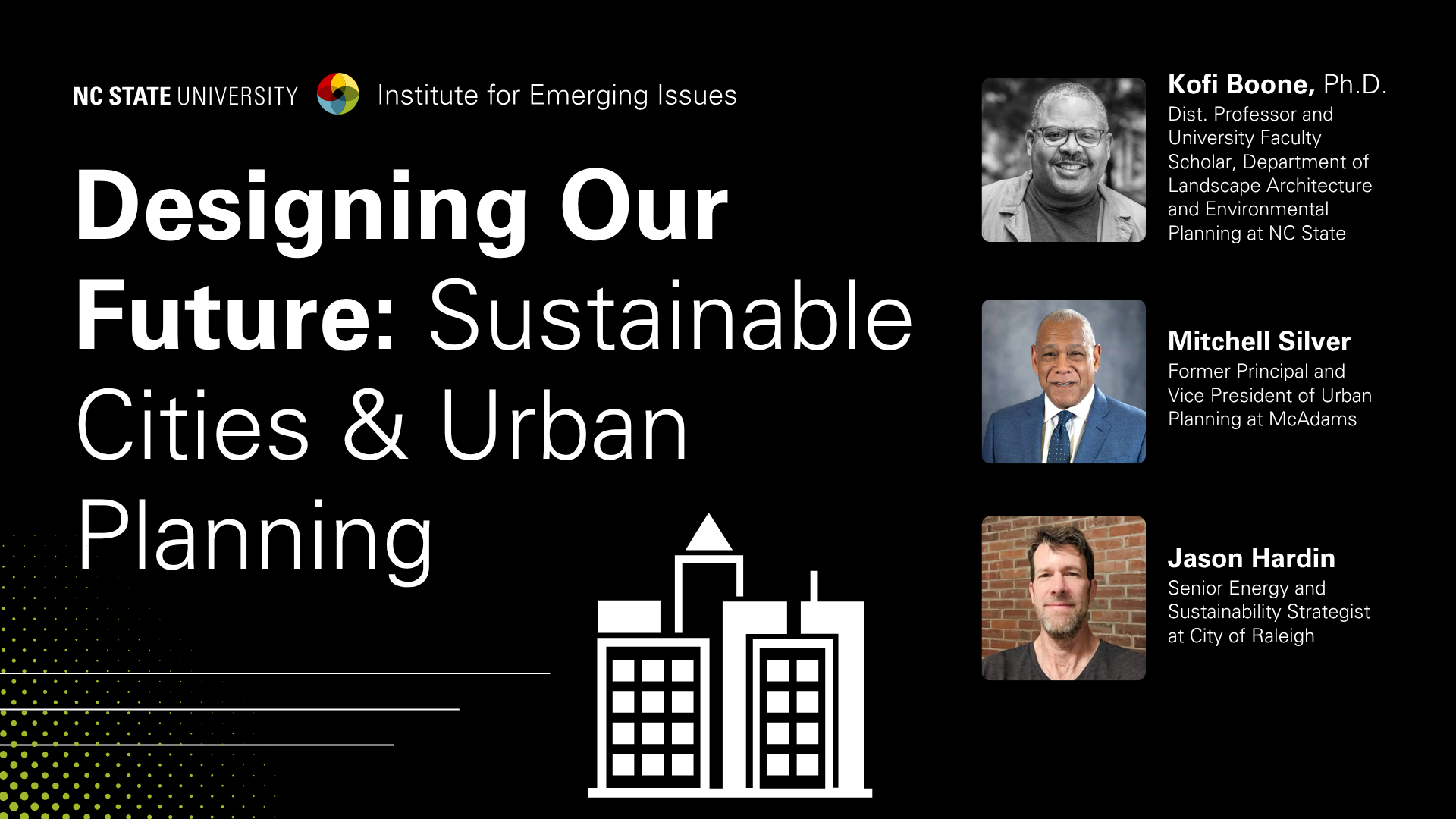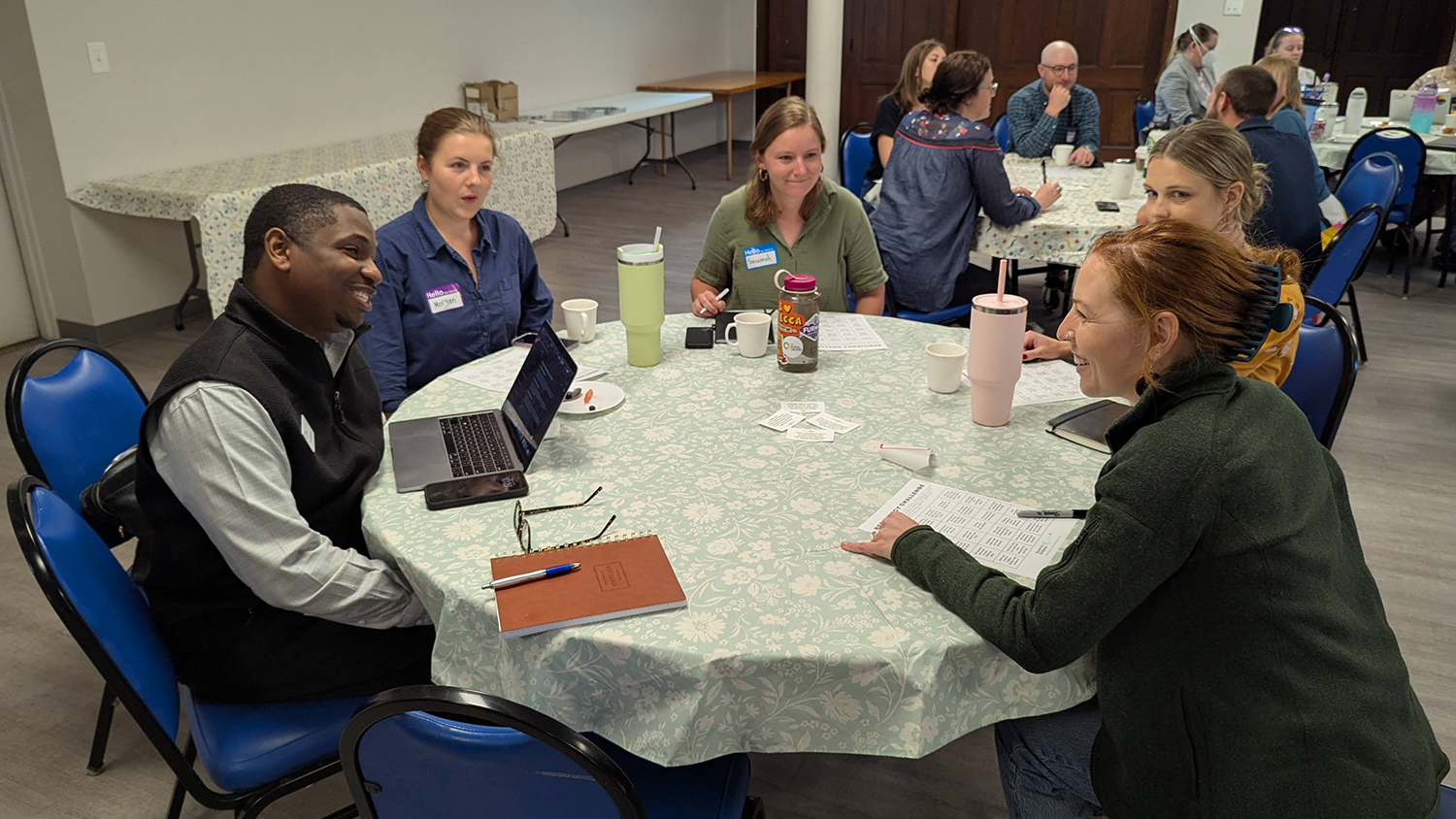Last fall, I had the pleasure of attending the Advanced Research Projects Agency-Energy (ARPA-E) roadshow hosted by RTI. Aimed at technologists, ARPA-E was promoting its role in funding disruptive “moonshot” technologies that could solve some of the biggest challenges facing the energy sector. To an audience of more than two hundred interested folks, they outlined a number of lending programs designed to test out new ideas and help the best ones move towards commercialization.
While IEI is not in the business of generating cutting edge technology, we are preparing for February’s Emerging Issues Forum: Future Forward Energy. The focus of this work is around how we as a state can best support local communities as they wrestle with big changes impacting the energy sector.
These macro forces include surging demand for electricity driven by population growth and industry expansions, the wider switch to clean energy and the impact of extreme weather events on our state. Accommodating these forces will require substantial upgrades to an aging and vulnerable electrical grid, as well as a robust workforce development response to meet the demand for thousands of new workers across many occupations. We need to do all of this while keeping energy affordable to our citizens.
As ARPA-E’s program managers outlined three areas most in need of technological disruption, I was struck by how well they corresponded to the challenges we face here in North Carolina:
- The need for a “grid of the future” or “macrogrid” – This country’s electrical grid is actually a regional patchwork, not a truly national one where electricity, from many sources, can flow easily, safely and efficiently from one part of the country to where it is needed in another. What is more, with the right technologies the system would be much more resilient and we would no longer be faced with having to rebuild like we do after each extreme weather event. How appealing that sounded in the wake of the destruction in the western part of our state.
- The need to dramatically reduce energy consumption in data centers – The use of the internet for, well, pretty much everything these days, is ramping up the demand for data centers, those on-the-ground backbones of the internet. The increasing incorporation of artificial intelligence into our internet-based programs and platforms is driving an unprecedented increase in electricity consumption by data centers. One statistic captured it clearly: A query of ChatGTP uses 10x more electricity than one Google search. As one speaker put it, the level of energy demand of one data center is now approaching that of a plant producing chemicals.
- The need to revolutionize energy storage – We can harness all of the solar and wind energy we like, but if we don’t have a way to store it for times when the wind isn’t blowing, it is dark outside or when peak energy demand hits each day, we can’t fully capitalize on these cheap and clean energy sources to power our buildings. Similarly, electricity is the transportation fuel of the future but adoption, particularly for vehicles, is being held back by high costs and consumer concerns about the limited number of miles you can drive on each charge.
A discussion featuring local leaders in the energy space followed immediately afterwards with panelists agreed with the importance of these challenges but underscoring a related set of areas needing attention: regulatory “innovation” to make it easier to try new technologies and deploy those with promise; promotion of the benefits of new energy technologies to generate public support–not opposition (or NIMBYism)–for them; and continued attention to meeting the huge demand for workers in the energy sector.
I came away feeling grateful that there were a lot of smart people interested in big technology ideas to solve these challenges. And with the recognition that the impact of these technologies depend critically on a supportive environment at the federal, state and local level.
I hope you will make plans to join us February 19, 2025. We will bring leaders at all levels together to focus on how best to support communities across our state as they wrestle with challenges and opportunities driven by the big changes taking place in our energy sector.



